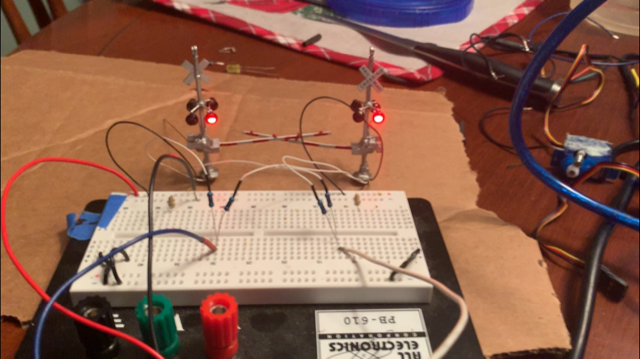Seasea19:
I am trying to modify the blink without delay example to alternate 2 LEDs pins (13 and 12) to flash alternately. Only pin 13 flashes. is the issue with the "if" statements
created 2005
by David A. Mellis
modified 8 Feb 2010
by Paul Stoffregen
modified 11 Nov 2013
by Scott Fitzgerald
modified 9 Jan 2017
by Arturo Guadalupi
This example code is in the public domain.
http://www.arduino.cc/en/Tutorial/BlinkWithoutDelay
*/
// constants won't change. Used here to set a pin number:
const int ledPin13 = 13;// the number of the LED pin
const int ledPin12 = 12;
// Variables will change:
int ledState13 = LOW;// ledState used to set the LED
int ledState12 = LOW;
// Generally, you should use "unsigned long" for variables that hold time
// The value will quickly become too large for an int to store
unsigned long previousMillis = 0; // will store last time LED was updated
// constants won't change:
const long interval = 800; // interval at which to blink (milliseconds)
void setup() {
// set the digital pin as output:
pinMode(ledPin13, OUTPUT);
pinMode(ledPin12, OUTPUT);
}
void loop() {
// here is where you'd put code that needs to be running all the time.
// check to see if it's time to blink the LED; that is, if the difference
// between the current time and last time you blinked the LED is bigger than
// the interval at which you want to blink the LED.
unsigned long currentMillis = millis();
if (currentMillis - previousMillis >= interval) {
// save the last time you blinked the LED
previousMillis = currentMillis;
// if the LED is off turn it on and vice-versa:
if (ledState13 == LOW) {
ledState13 = HIGH;
} else {
ledState13 = LOW;
// if the LED is off turn it on and vice-versa:
if (ledState12 == HIGH) {
ledState12 = LOW;
} else {
ledState12 = LOW; //<------------- shouldn't this be HIGH?????
}
}
// set the LED with the ledState of the variable:
digitalWrite(ledPin13, ledState13);
digitalWrite(ledPin12, ledState12);
}
}
In the code you posted I pointed where I think the mistake lies (I put the comment in the above quote). 
Hope that helps....



